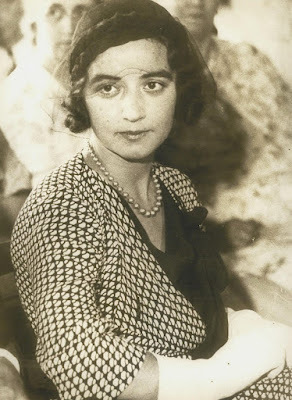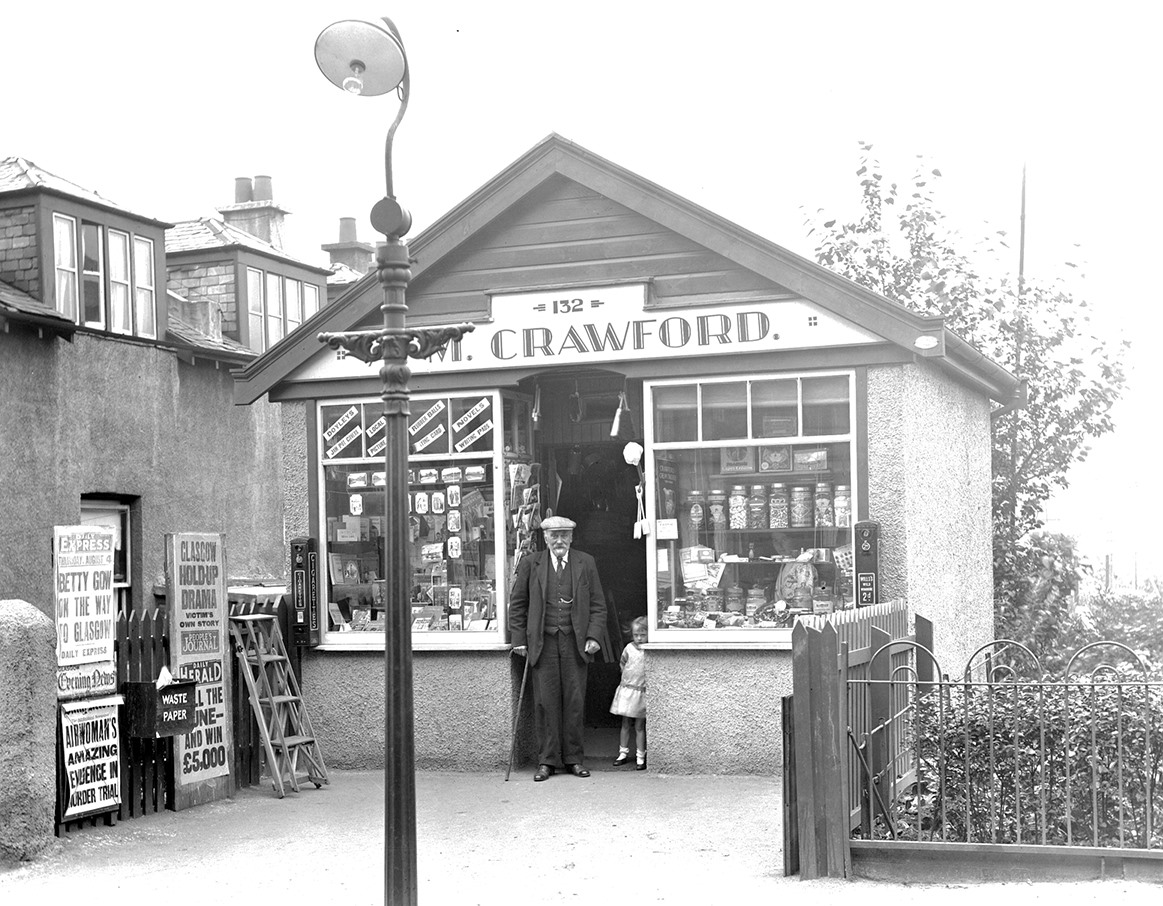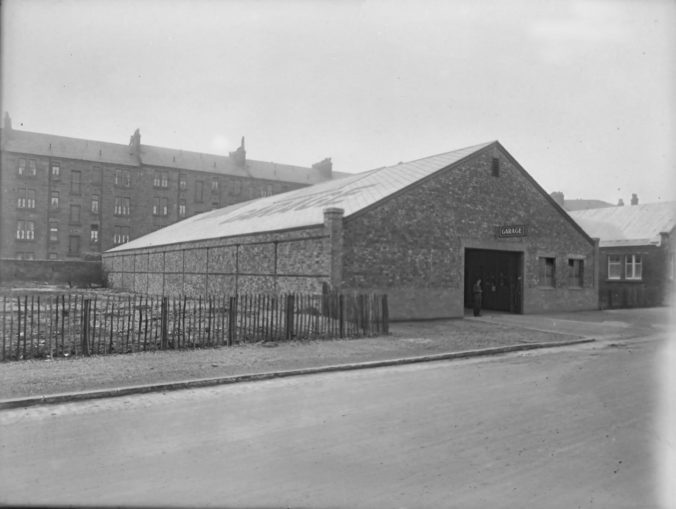The last article in the series on Strathbungo’s commercial motor garages, but this one covers much more than just Scottish Cars. You wouldn’t believe it now, but Titwood Road was once a hive of industry, covering cars, photography, catering, indoor tennis, bowls, boxing, engineering, boot making, cold storage, veterans, and a large dairy. Almost all evidence of this has now vanished.
Titwood Road

Lane off Waverley Street, the original line of Titwood Road
Titwood Road was originally a farm lane that led over the railway where Crossmyloof Station now sits. The tenements of Waverley Gardens were built with their back courts facing directly onto the lane, but in 1922 the road was realigned a little further north, providing new plots for the Pollok Estate to feu on the south side of the road. At the Pollokshaws end, these plots were used for housing, as extensions of the Moray Park development of red sandstone houses by James Wright (Strathbungo’s Gardens) and the white houses of William Todd Aitkenhead (Carswell Gardens). From opposite Carswell Gardens up to Minard Road, the plots were all feued for commercial purposes.
Continue reading
Like this:
Like Loading...





Recent Comments